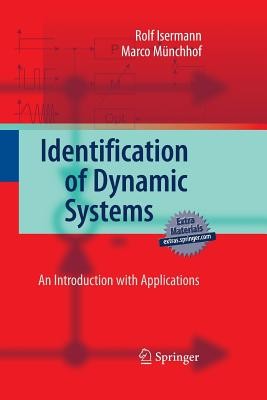
- We will send in 10–14 business days.
- Author: Rolf Isermann
- Publisher: Springer
- Year: 2014
- Pages: 705
- ISBN-10: 3642422675
- ISBN-13: 9783642422676
- Format: 15.6 x 23.4 x 3.7 cm, minkšti viršeliai
- Language: English
- SAVE -10% with code: EXTRA
Reviews
Description
For many applications, ranging from controls engineering to natural sciences and economics, precise dynamic models must be derived. In the vast majority of applications, such precise models cannot be derived by theoretical considerations only. The book discusses methods, which allow the determination of dynamic models based on measurements taken at the process, which is known as system identification or process identification respectively.
After a short introduction into the required methodology of continuous-time and discrete-time linear systems, the focus is first on the identification of non-parametric models with continuous-time signals employing methods such as Fourier transform, measurement of the frequency response and correlation analysis. Then, the parameter estimation for parametric models is presented with a focus on the method of Least Squares, followed by some of its most prominent modifications. Issues such as parameter estimation for time-variant processes, parameter estimation in closed-loop, parameter estimation for differential equations, continuous time processes and efficient implementations of the algorithms are discussed. The different methods are compared and an outlook is given on non-linear system identification methods, such as neural networks and look-up tables.
Powerpoint slides for a 12-14 week graduate level course can be made available to teachers
EXTRA 10 % discount with code: EXTRA
The promotion ends in 21d.12:08:03
The discount code is valid when purchasing from 10 €. Discounts do not stack.
- Author: Rolf Isermann
- Publisher: Springer
- Year: 2014
- Pages: 705
- ISBN-10: 3642422675
- ISBN-13: 9783642422676
- Format: 15.6 x 23.4 x 3.7 cm, minkšti viršeliai
- Language: English English
For many applications, ranging from controls engineering to natural sciences and economics, precise dynamic models must be derived. In the vast majority of applications, such precise models cannot be derived by theoretical considerations only. The book discusses methods, which allow the determination of dynamic models based on measurements taken at the process, which is known as system identification or process identification respectively.
After a short introduction into the required methodology of continuous-time and discrete-time linear systems, the focus is first on the identification of non-parametric models with continuous-time signals employing methods such as Fourier transform, measurement of the frequency response and correlation analysis. Then, the parameter estimation for parametric models is presented with a focus on the method of Least Squares, followed by some of its most prominent modifications. Issues such as parameter estimation for time-variant processes, parameter estimation in closed-loop, parameter estimation for differential equations, continuous time processes and efficient implementations of the algorithms are discussed. The different methods are compared and an outlook is given on non-linear system identification methods, such as neural networks and look-up tables.
Powerpoint slides for a 12-14 week graduate level course can be made available to teachers


Reviews